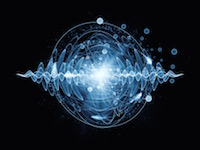
- Speaker: Dr. Hong, Seung Sae (Stanford University)
- Date: Wednesday May 30, 2018 05:00pm
- Place: 이학관 432
The concept of topology has been broadly applied to modern condensed matter physics. The talk will discuss how the materials in the reduced dimension offer new opportunities to observe topological effects in electronic and crystalline structures, with examples from two distinct quantum materials families - topological insulators and complex oxides.
In the first part, I will describe the experiments on topological insulator nanostructures (Bi2Se3), with an insulating gap in the bulk and gapless surface states. The rational nanomaterial design allows us to access quantum transport of the spin-textured surface electrons, manifesting a spin-Berry's phase via 1D helical modes.
The second part will be focused on the crystalline order of complex oxides (SrTiO3) in the 2D limit. Atomically controlled oxide layers are released by dissolving an underlying epitaxial layer, where we observe that the lattice collapses below a critical thickness (5 unit cells). This crossover from algebraic to exponential decay of the crystalline coherence length reflects the 2D topological Berezinskii-Kosterlitz-Thouless (BKT) transition, driven by chemical bond breaking at the 2D layer - 3D bulk interface.
